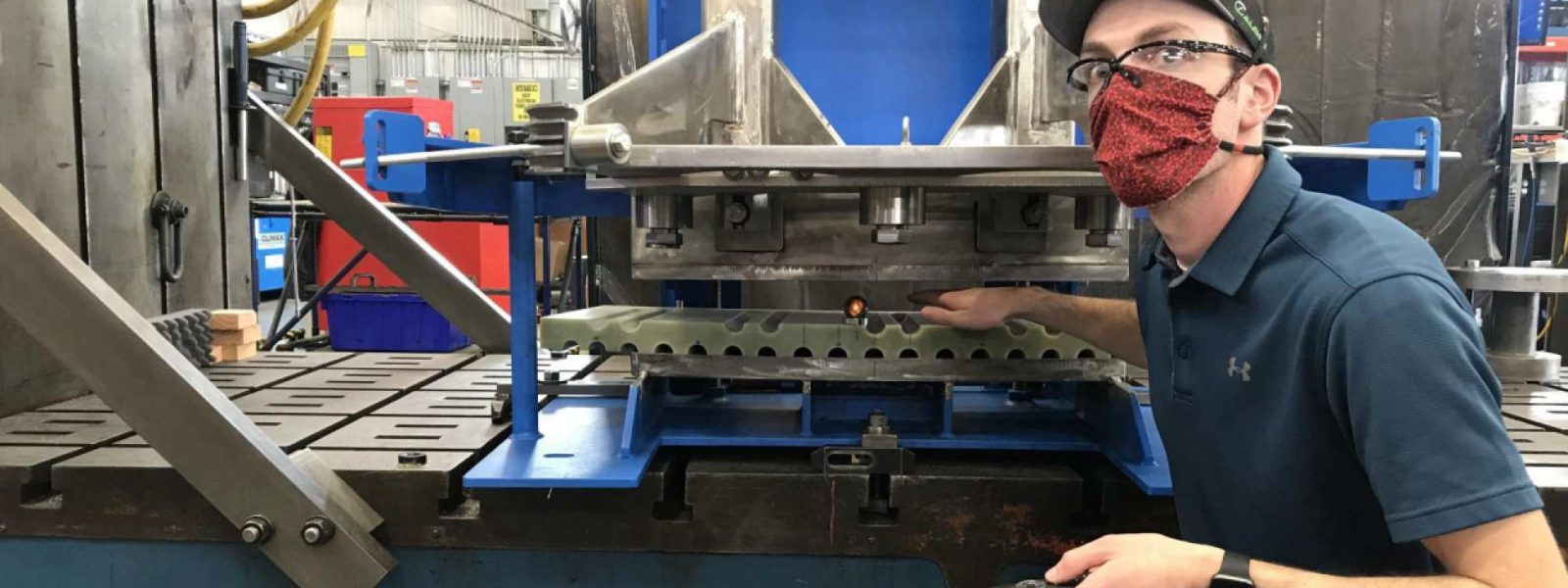Like many other ITER staff around the world, US ITER senior project engineer Travis Reagan did not expect to spend most of 2020 working remotely.
“Before the pandemic, we were probably traveling every two weeks to follow up on the fabrication, assembly and testing of tools and components. Quarantine really forced us to rethink the way we do our job,” Reagan said.
The team soon realized that they would need to get creative to complete a set of assembly tools the international ITER project will require this fall to start the assembly of its central solenoid, a massive 15.5-meter-tall magnet assembly at the heart of the international ITER tokamak.
In addition, the team is nearing completion of the delivery of critical support structures that will surround and stabilize the central solenoid.
Among the pieces delivered by US ITER in 2020 is the assembly platform, the base onto which the entire central solenoid will be very precisely erected.
“In spite of its size, approximately the footprint and height of a two-car garage, the assembly platform positions the central solenoid components to within fractions of a millimeter while keeping the entire 1,200-metric-ton, 15.5-meter-tall stack level, plumb and stable,” explained David Vandergriff, US ITER senior project engineer.
Postponing design, fabrication and delivery of the pieces was not an option for the international project, which relies on hardware contributions from the United States plus host Europe, China, India, Japan, Korea and Russia.
Climax Portable Machine Tools in Newberg, Oregon was selected for a critical drilling operation to assemble precision alignment pins that will prevent movement of the massive structure during operation. Due to COVID travel restrictions, however, US ITER was not able to attend the critical factory acceptance testing, which meant looking for alternative solutions to assess manufacturing performance.
Ultimately, they found a collaborator in the Pacific Northwest that was willing to make a routine week-long trip to Climax facilities, inspect the progress and report back to the US ITER team in Tennessee via live video streaming.
“This allowed us to conduct US ITER’s first remote factory acceptance test,” said Reagan.
Some of the new procedures the team put in place are expected to survive even after the pandemic, said Vandergriff. For example, they plan to continue video recording and video streaming in factories where the pieces are being produced. This could have significant impacts in terms of resource efficiency, making certain processes less expensive, and as a tool to facilitate training of the installation contractor.
“We are excited to see the equipment in place and successfully completing the needed operations on the actual workpieces,” stated Scott Thiel, vice president of engineering, R&D at Climax.
US ITER is responsible for supplying four assembly tooling packages for the central solenoid. The first two were shipped to the international organization in mid-2018 and March 2020, respectively.
The third set of assembly tooling hardware, the drill fixtures mentioned above, was successfully shipped to the ITER Organization and was received at the site in February 2021. The total value of the assembly tooling contracts fulfilled in 2020 is close to $10 million.
“Half of our central solenoid tool commitments got delivered during the year of the worst pandemic the world has seen in a century. The flexibility demonstrated by our team has been a very valuable asset,” said Graham Rossano, US ITER technical systems division director.
In addition to the central solenoid, US ITER is also responsible for providing hardware for 11 other systems to enable ITER operations and science. —Andrea Schneibel
US contributions to ITER are sponsored by the US Department of Energy Office of Science and managed by UT-Battelle at Oak Ridge National Laboratory in Tennessee, with contributions by partner labs Princeton Plasma Physics Laboratory and Savannah River National Laboratory. For more information, see https://usiter.org. The Office of Science is the single largest supporter of basic research in the physical sciences in the United States and is working to address some of the most pressing challenges of our time. For more information, please visit https://science.energy.gov.
Media Contact: Lynne Degitz
